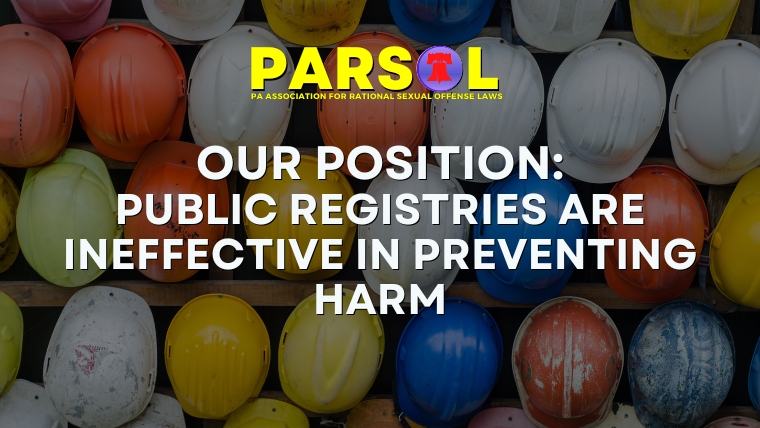Public registries are defended to protect children from strangers who pose a high risk to them. Yet, the United States Department of Justice reports that 93% of sexual offenses against children are committed by members of their own family or close acquaintances and by first-time offenders who would not have been on such a registry.
Here in Pennsylvania, the statistics are even more revealing. The most recent (2022) Child Abuse Report by the Pennsylvania Department of Human Services shows us that 98.66% of all substantiated child abuse occurred at the hand of someone the survivor knows, with 92.6% being an immediate family member or one of their parent’s partners/ex-partners.
An American Psychological Association analysis noted, “Despite the public perception that sex offenders are strangers stalking playgrounds and other areas where children congregate, the majority of offenses occur in the victim’s home or the home of a friend, neighbor, or relative.” As to the claim that reoffense rates are ‘frightening and high’ the Pennsylvania Department of Corrections listed recidivism rates for sexual offenses as the lowest classification of crime tracked. The Pennsylvania Commission on Crime and Delinquency’s 2022 report to the Pennsylvania Task Force on Child Pornography stated that persons incarcerated for Child Sexual Abuse Material (CSAM) charges had a remarkably low reoffense rate of 1.89%, noting that an additional 2.4% were rearrested due to administrative issues surrounding their registration filing.
A call for registry reform
In both the criminal justice system and group treatment settings, evidence-based practices, including risk assessments, are essential for ensuring the safety of individuals and communities while also promoting effective rehabilitation. By employing validated methods and research-supported tools, we can accurately identify the risks posed by individuals involved in the justice system and tailor interventions accordingly. However, the data that most risk assessments may be biased, so judges should have the discretion to make an individualized assessment of what sentence is appropriate based on the circumstances of the case and the person being sentenced. Sentencing and registration requirements should not, and must not, be a one-size-fits-all policy.
Furthermore, in the nearly-three-decades that the sex offense registry has existed, experts have determined the best evidence-based treatment programs that prevent relapse and recidivism for past offenders and prevention programs for those at risk of engaging in criminogenic behaviors. These include the Road to Freedom curriculum by Jill Levenson, Ph.D. & John Morin, Ph.D. and the Facing the Shadow curriculum by Patrick Carnes, Ph.D.
ACTIONS:
- To effectively combat the public health crisis of sexual harm in Pennsylvania, it is vital to examine several evidence-based outcomes from the past three decades of peer-reviewed and academic research on the subject. Not only have there been significant advances in our understanding of these types of crimes, but the nature of today’s crimes of a sexual nature looks very different than it did years ago. We need to update the Pennsylvania Crimes Code to ensure that the description, grading, and sentencing guidelines for these crimes are commensurate with today’s standards. (See 2023 HR263).
- To increase the successful reentry of returning citizens with a sexual offense, reentry programs, parole, special probation conditions, and other restrictions should be based on standardized risk assessment protocols, not a one-size-fits-all approach. The legislature should reform legislative carve-outs that exclude registrants from services or opportunities for successful reentry. New legislation must not contain these exclusions.
- To treat all individuals involved in the criminal legal system fairly, the one-size-fits-all tiered system for registrants should be reformed to a risk-based model, similar to Arkansas, California, Georgia, Massachusetts, Minnesota, Montana, New Jersey, New York, North Dakota, Oregon, Rhode Island, Texas, Vermont, and Washington.
Additional Resources
- Registries are Ineffective NARSOL White Paper [PDF]
- Huffington Post: Sex Offender Registries Don’t Keep Kids Safe, But Politicians Keep Expanding Them Anyway
- NPR: For Registered Sex Offenders, An Uphill Civil Rights Battle
